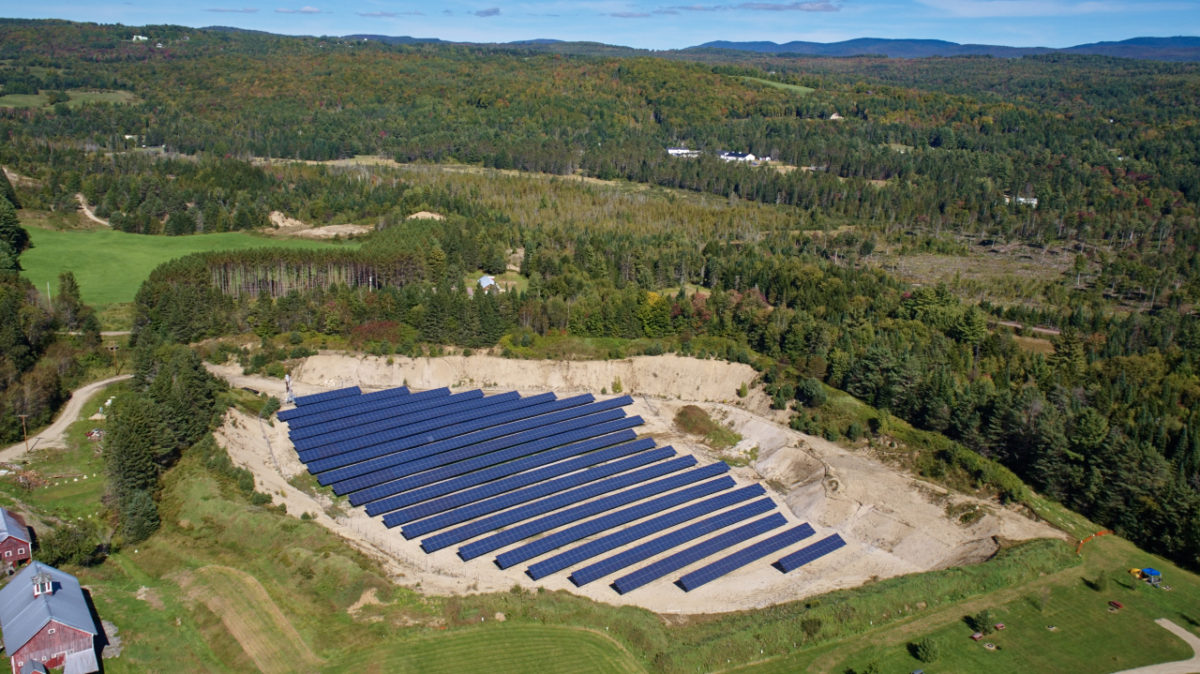Commercial and industrial solar projects in the US are often forced to wait more than three years on average to get approval to connect to the utility grid. This creates uncertainty, increases costs, and slows solar development. The situation is so bad that about three-quarters of projects in interconnection queues drop out before ever completing the process. Many more projects are likely not even considered due to interconnection challenges.
This is unacceptable. As Congress remains stalled on climate action and President Biden weighs whether to declare a climate emergency, severe heat waves in the US and Europe, and the highest energy prices seen in history, remind us that we must take action now to increase our nation’s solar capacity.
Without interconnection hurdles, solar is quicker to deploy than fossil fuel development and is now competitive economically. Solar in the US has already increased dramatically in the last decade, from 255 MW of installed capacity in 2002 to over 121 GW today. As significant as that is, the pipeline of future projects is even more impressive, at an additional 1100 GW of solar and energy storage projects. Solar is among the least expensive forms of electricity generation, and it can be produced domestically and can be done sustainably.
To meet our nation’s clean energy and climate goals, we must ensure that these projects get built. An interconnection process overhaul is long overdue.
Guiding principles for interconnection
The good news is that we know how to make the fix. Interconnection has been studied extensively by numerous industry groups and research organizations, which have arrived at some essential guiding principles for reform.
- Transparency. The interconnection process must be detailed and transparent. Some states have interconnection data available. However, it tends to be incomplete and lacking details. Solar developers need complete, easy access to interconnection studies, queues, costs, and grid maps in order to plan their projects. Without grid data, a developer might spend significant time and money designing a project, only to find that it can’t be built because they must pay for prohibitively expensive grid upgrades. Similarly, queue information would give developers more insight into the likelihood that their project could be built.
- Cost certainty. An essential aspect of transparency is that developers must be able to determine as early as possible how much it will cost to connect their project to the grid. Any infrastructure upgrade cost estimates must be reasonable and directly related to the project.
- Standardization. A standardized interconnection process would give developers insight into what to expect and speed up the process. To the extent possible, standardized fees should be implemented.
- Automation. Automated web portals would make it quicker and easier to submit interconnection applications and to exchange information. Incorporating more automation in every stage of the process would speed up interconnection significantly.
- Accountability. Transmission and distribution providers should be required to adhere to clear and consistent interconnection rules and timelines, which must be rigorously enforced. Penalties should be imposed for providers that fail to complete interconnection studies on time.
- Aggregation. Interconnection queues could be sped up by studying multiple proposed generating facilities simultaneously rather than conducting separate studies for each facility. Energy storage and solar + storage projects should also be included.
How the US is addressing interconnection reform
Some states have begun to make improvements to the interconnection process. California leads in addressing transparency, a key area for reform.
The California Public Utilities Commission (CPUC) has been conducting an interconnection proceeding for years. In June, the CPUC issued a decision that dramatically simplifies the interconnection process, providing a model that other states should follow.
Project size limits were removed for the state’s fast-track interconnection review process. And California’s integration capacity analysis (ICA) maps, established by the proceeding, will now be used in interconnection reviews, replacing the previous imprecise “rules of thumb” method.
ICA maps show the available capacity at any point on the primary grid circuits. Using these detailed maps, developers can identify locations that have the potential to interconnect projects before spending time and money submitting interconnection applications. The maps are now updated once a month; ideally, they would be automated with real-time updates to ensure they are always current.
Often known as hosting capacity analysis (HCA) maps, similar maps have been adopted by Connecticut, Maine, Maryland, Massachusetts, Minnesota, Nevada, New Jersey, New York, Rhode Island and Green Lantern Solar’s home state, Vermont. But accuracy remains an issue for most of these, and many more states must provide the maps.
As necessary as HCA maps are, they’re only one piece of the puzzle. The other principles outlined above must also be included in interconnection reform. Given this need, and the uncoordinated and varied progress on interconnection around the US, it’s a positive development that interconnection has been taken up by the Federal Energy Regulatory Commission (FERC).
In June, FERC issued a notice of proposed rulemaking (NOPR) that detailed the agency’s proposed reforms to address interconnection queue backlogs. The reforms incorporate principles like transparency, standardization and accountability.
The NOPR calls for implementing a first-ready, first-served cluster study process that prioritizes projects that are ready and have a greater chance of being built, increasing the speed of interconnection queue processing, and incorporating technological advancements into the interconnection process. In addition, the NOPR proposes a requirement for a standardized, transparent study process and firm deadlines for interconnection studies, with penalties for transmission providers that do not meet the deadlines. If FERC’s rulemaking is adopted in the form proposed, it will be a significant step toward improving interconnection.
It’s time to make the fix
The solar industry is no stranger to obstacles. We’ve persisted and even thrived through numerous growing pains. We will undoubtedly find a way to fix interconnection, ensuring that the hundreds of GW of solar now in the queue become actual projects.
Now is the time to finally remove this significant obstacle, which has been hampering the growth of solar for far too long. States and regional transmission organizations (RTOs) must continue making reforms to interconnection, and FERC must implement its proposed reforms. These steps are urgently needed to remove the bottleneck preventing our country from deploying the renewable energy we need.
 Geoff Sparrow, is vice president of development at Green Lantern Solar.
Geoff Sparrow, is vice president of development at Green Lantern Solar.
The views and opinions expressed in this article are the author’s own, and do not necessarily reflect those held by pv magazine.
This content is protected by copyright and may not be reused. If you want to cooperate with us and would like to reuse some of our content, please contact: editors@pv-magazine.com.








Someone builds a 1.2-megawatt system and the only close utility lines can only handle 400 KW of power. That system cannot connect until the utility lines are upgraded. What would happen of the 1.2-megawatt system was paired with battery storage and could meter the power out at 300 Kw on those lines over 24 hours rather 1.2 megawatts over 4 to 6 hours? Could the utility fast track such a system? Right now, we demand the utility bring in the 1.2-megawatt capable lines and so they install a 3-megawatt transmission system to the nearest substation. That can take up to two years to design, engineer and build and who pays for all that? The government say to pass it onto the ratepayers. Installing Solar and wind next to sub stations or existing power plants can save both time and money as was seen when PG&E shuttered it’s Moss Landing power plant in California and installed a large storage facility on its grounds. Also installing Storage at generation points and rounding the instantaneous peaks with a metered inverter outputs could also make integration easier. This could also be used when determining the size of residential electricals services if Battery storage and a metered excess amount of energy is re-injected back to the utility. I think the utility would welcome a rooftop solar system that would put out continuous 2kw over 24 hours rather than 10 kw over 3 hours and 5 kw over 3 hours then nothing the rest of the night.
I just had my project shot down after Excel energy sat on the request for two years. Then came up with a $2.2 Million dollar connection fee saying they would have to run 9 miles of new wire when they only would have to go over an interstate Hwy about !/4 mile to connect to the 3 phase wire. But they didn’t want to go over the Hwy, even thou in a 7 mile screech the power lines crossed it 8 times.
Yours is one of many good examples of interconnection problems from virgin land far from distribution points. $2.2 million dollars would buy a lot of storage and if you came back will a plan that included a lower but longer metered output using storage, they might be more eager to accommodate you and give you a lowered connection fee tapping into the existing 3 phase run going under the interstate with smaller underground conduit and wire runs. You might even get more revenue from such a system re-cooping the 2.2 million and then some. Good luck.